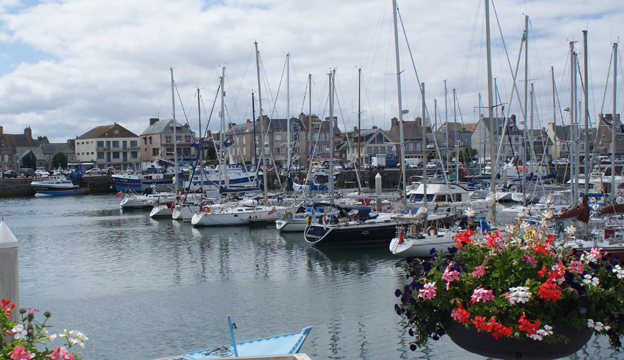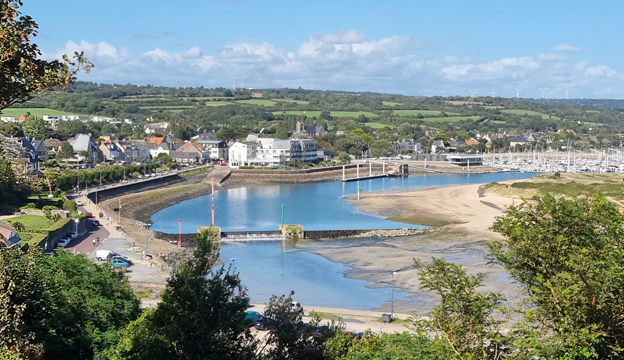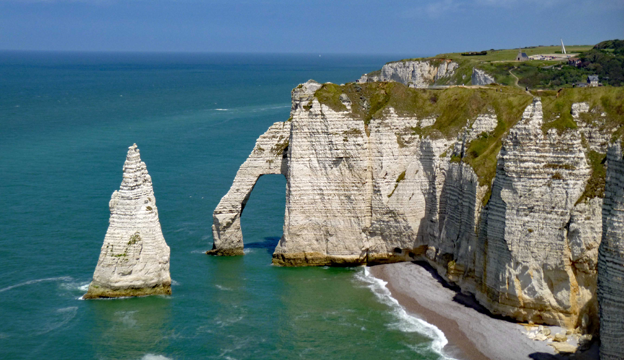Sailing to France
by CA Channel Section
Introduction
The CA provides members with a comprehensive range of information to assist in navigating the entry requirements of commonly visited countries. With the UK no longer part of the EU, various procedures must be adhered to. The processes are generally clearer these days, so don’t let the bureaucracy put you off sailing to and in the EU. We hope you find the following non-member pages useful.
Jump to content
Disclaimer: Any advice has been prepared voluntarily by the Cruising Association, its members and others and they and it have tried to ensure that the contents are accurate. However, the Cruising Association, its employees, contributors and relevant members shall not be liable for any loss, damage or inconvenience of any kind howsoever arising in connection with the use of and/or reliance on such advice, save to the extent required by applicable law.
Entering and leaving the UK requires processes which were once the form C1331 but now the online Pleasure Craft Report (sPCR) process.
Being a part of the EU and Schengen area provides defined and automatic visiting rights for EU citizens and citizens of a number of other countries.
UK citizens, under the Brexit agreement, may visit for 90 days in a rolling 180 day period.
Citizens of other non-Schengen countries are advised to check on the French government web site for information on conditions for their entry.
Those wishing to stay in France over 90 days in 180 will need to apply for and receive a long stay visa or one of the residency options.

St Vaast - Bob Garrett
Channel France - Official Ports of Entry
France has a list of designated Ports of Entry (Points de Passage Frontalier or PPF) at which there are Offices (either the Police Aux Frontières (PaF) or Douane/Customs) to complete these processes with you.
If a boat arrives in France via a PPF port it must leave via a PPF port, and passports will be stamped on arrival and departure by the Border Authorities. Depending on the port it may be that the Declarations of Arrival and Departure form must still be submitted via the relevant marina authorities probably to arrange an appointment with the Border authority.
There are also other ports which have special procedures for managing entry and exit as set out further down the page. Some Ports of Entry may also offer the facility to check-in/out by email forms. Note that with a single exception this page only covers those ports in the Channel area.
Further details on the processes and paperwork you are required to carry are on other CA web pages. For directions to the relevant offices in a port there are some directions on this page and in CAptain's Mate but you might also ask the marina office. Be aware that the offices may only be open for restricted hours and appointments may be necessary for some so plan ahead.
List of Ports: Dunkirk, Gravelines, Calais, Boulogne (pending), Dieppe, St Valery en Coux, Fécamp, Le Havre, Honfleur, Deauville-Trouville, Dives sur Mer, Courseulles-Sur-Mer, Port en Bessin, Grandcamp-Maisy, Carentan, St Vaast, Cherbourg, Diélette, Carteret, Portbail, Granville, Cancale, St Malo, Plouer-sur-Rance, St cast (le Guido), St Brieuc/Légué, Binic, St Quay Portrieux, Paimpol,Lézardrieux, Pontrieux, Tréguier, Perros-Guirec, Trébeurden, Morlaix, Roscoff, L’Aber-Wrac’h.
Channel France - Other Ports
As of 1st June 2024 the French government has introduced a new "protocol" to permit the reception of boats from outside of the Schengen area at an additional 53 marinas which are not Ports of Entry (PPFs).
Listed below are the ports (in order along the coast starting in the east) offering this service. Details such as links to the relevant forms will be updated as we hear of them from CA members, CA volunteers, CA HLRs or the ports/marinas themselves. Some information against the ports is from prior years and is left there in case it remains correct.
To take advantage of this facility you must download the relevant form for the port/marina, complete the details on the form and email it back to the address or addresses on the form. This must be done at least 24 hours before arrival or departure, or if the passage is less than 24 hours when departing the previous port. We assume, though the protocol does not state this, that on arrival your may collect the stamped form from the marina office; and with departure then the stamped form will be emailed back to you.
There is a standard template form produced as a pdf which marinas may add the relevant email addresses to. However, this form is difficult to fill in without special software so the CA has made a pdf form from this which should be acceptable. French officials have also produced an odt (open document text) file which may be used. These three general documents are available as downloads at the bottom of this page.
If a boat arrives in France via a non-PPF port (under the "protocol") it should only leave by another non-PPF (protocol) port. No inspection of passports is required, as all information concerning persons on board is contained in the Declarations of Arrival and Departure submitted to the marina authorities for onward transmission to the Border Authorities.
If a boat arrives and leaves by the same non-PPF port no inspection of passports is required for the same reasons.
In the case of a boat arriving at a non-PPF (protocol) port and wishes to depart via a PPF all the crew must present themselves on arrival at the port of entry (PPF) associated with that non-PPF (protocol) port (the marina office will be able to advise which this is if it is not clear on the entry form) for passport inspection and stamping.
It may be wise to retain the form you submit both as the pdf and the email sent in case proof is subsequently needed - maybe keeping them permanently or until EU EES (Entry Exit System) and ETIAS (European Travel Information and Authorisation Scheme) is operational.

Carteret - Steve Lacey
Crew Changes
Extra considerations are necessary where you may be entering and leaving France with different crew; for example some crew leaving or arriving by ferry because of crew changes.
In the case of individual crew changes there are no complications if both arrival and departure of the individual and the boat are via PPFs (which might be sea or air) because individual passports are stamped. However, if arrival or departure of the boat is to be via a non-PPF (protocol port) then extra processes are required.
Given that you only receive one stamped form per boat declaring those arrived (or departed) the crew using a ferry have no proof of legal entry/exit which might cause a problem with passport control. In such cases an option may be (other than actually checking in and out at ports of entry where passports would be individually stamped) that the stamped form is copied and retained by the crew with their passport probably for as long as the passport is in use or EES is introduced. In this way they have proof of legal entry and/or exit.
However, it may be that some ports may not accept this as proof so you should check in advance. For ports outside of France it seems unlikely that this will be acceptable. The solution is as described elsewhere on this page, which is to visit the PPF associated with the arrival non-PPF for passports to be stamped.

Etretat - Bob Garrett
Cruising Onwards
It is not clear how other countries will view the French process whereby entry and exit can be made without a stamp in a passport. If for example you sailed to France, entered a port which was not a PPF but had the necessary stamped form, and then cruised on to Spain or Belgium would those authorities accept you entered the EU Schengen area legally?
In such cases the other option is that you should check in at a port of entry. This might be on first arrival or shortly after.
Q Flag Use
Note also that while it is common international practice to fly a Q (yellow) flag until cleared for entry, we are advised that in France this is only necessary if you have goods to declare.
See also